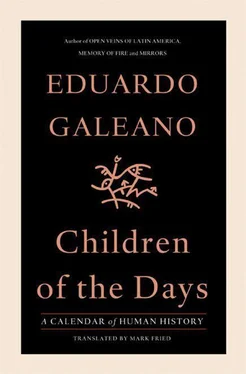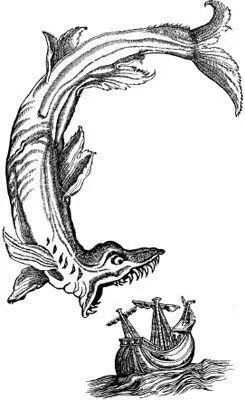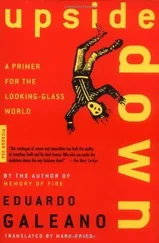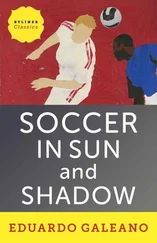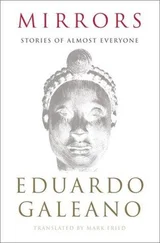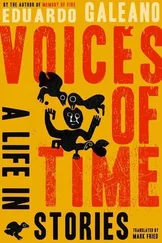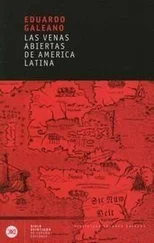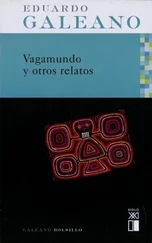After his banishment, Khama came to lead the struggle for Botswana’s independence. And in 1966 he became the country’s first president, elected by a wide majority in a clean vote.
That was when he received, in London, the title of Sir.
September 30. INTERNATIONAL TRANSLATION DAY
From the south of Veracruz a boy set out to seek his fortune.
Upon his return years later, his father wanted to know what the boy had learned.
The son answered, “I am a translator. I learned the language of birds.”
Then a bird sang and the father demanded, “If you aren’t a damned liar, tell me what that bird said.”
The son refused. He pleaded that he’d better not, that you wouldn’t want to know, but his father would not relent. So he translated the bird’s song.
The father grew pale. And he kicked his son out of the house.
October 1. EMPTIED ISLAND
“There will be no indigenous population except seagulls,” declared an internal British government memo.
And in 1966 they kept their word.
All the inhabitants of the island of Diego Garcia, minus the seagulls, were expelled under threat of bayonets and gunfire.
The British then leased the emptied island to the United States for half a century.
This paradise of white sand in the middle of the Indian Ocean became a military base, a station for spy satellites, a floating prison and torture chamber for suspected terrorists, and a staging ground for the annihilation of countries that deserve to be punished.
It also has a golf course.
October 2. THIS WORLD ENAMORED OF DEATH
Today, International Day of Nonviolence, let us recall the words of Dwight Eisenhower, who was not exactly a pacifist. In 1953, as president of the country that spends the most on weapons, he acknowledged:
“Every gun that is made, every warship launched, every rocket fired signifies, in the final sense, a theft from those who hunger and are not fed, those who are cold and are not clothed.”
October 3. CURLING THE CURL
In 1905 German hairdresser Karl Nessler invented the permanent wave.
His experiments nearly incinerated the head of his long-suffering wife, a martyr to science, before Karl at last found the formula for making perfect curls and keeping them that way for two whole days in reality, and for several weeks in the advertising.
Then he took on a French name, Charles, to give his product some style.
Over time, curls became a privilege not only of women.
A few men dared.
We baldies did not.
October 4. WORLD ANIMAL DAY
Until some time ago, many Europeans thought animals were demons in disguise.
The execution of bedeviled beasts by hanging or by fire was a public spectacle as popular as the burning of Satan-loving witches.
On April 18, 1499, in the French abbey of Josaphat near Chartres, a three-month-old pig was tried in court.
Like all pigs, he had neither soul nor reason and was born to be eaten. But instead of being eaten he ate: he was accused of having had a child for lunch.
The charge was not based on any evidence.
Yet the little pig was still found guilty. Lacking proof, prosecuting attorney Jean Levoisier, a graduate in law and chief magistrate at the monastery at Saint-Martin de Laon, revealed that the devouring had taken place on Good Friday.
Then the judge passed sentence: capital punishment.
October 5. COLUMBUS’S FINAL VOYAGE
In 1992 the Dominican Republic finished building the most unusual lighthouse in the world, one so tall its beams disturb God’s sleep.
The lighthouse was erected in homage to Christopher Columbus, the admiral who pioneered European tourism in the Caribbean.
Before the inaugural ceremony, Columbus’s ashes were removed from Santo Domingo’s cathedral and transported to a new mausoleum at the foot of the lighthouse.
While the ashes were en route, the president’s younger sister Emma Balaguer died suddenly after touring the lighthouse, and the stage on which Pope John Paul II was to give his blessing collapsed.
Some malevolent minds considered this further proof that Columbus brings bad luck.
October 6. CORTÉS’S FINAL VOYAGES
In 1547 when he felt death tickling his backside, Hernán Cortés instructed that he be buried in Mexico in the convent at Coyoacán, to be built in honor of his memory. When he died, the convent was still a maybe and the deceased was obliged to stay in a series of homes in Seville.
At last he found passage on a ship to Mexico, where he took up residence beside his mother in the church of San Francisco in Texcoco. From there, he moved on to another church to lie beside the last of his children, where he remained until the viceroy ordered him transferred in secret to the Hospital de Jesús out of reach of the Mexican patriots dying to ravage his tomb.
The key to the crypt went from hand to hand, priest to priest, for more than a century and a half, until not long ago forensic specialists confirmed that those awful teeth and syphilis-pocked bones were indeed what remained of the body of the conquistador of Mexico.
Of his soul, no one knows. They say Cortés had it consigned to a soul-keeper from Usumacinta, an Indian named Tomás, who caught souls fleeing on the final breath and kept them in a collection of little jars, but that could never be confirmed.
October 7. PIZARRO’S FINAL VOYAGES
The scientists who identified Hernán Cortés also confirmed that Francisco Pizarro resides in Lima. His is that pile of bones pierced by stakes and chipped by blows that tourists flock to.
Pizarro, a pig farmer in Spain and a marquis in America, was assassinated in 1541 by his fellow conquistadors when they fought heroically over the Incas’ imperial booty.
He was quietly buried in the cathedral’s front yard.
Four years later, they let him inside. He found a spot under the main altar until an earthquake hit and he went missing.
He remained missing for a long time.
In 1891 a crowd of admirers gawked at his mummy in a glass urn, though it quickly came out that the mummy was an impostor.
In 1977 workers repairing the cathedral crypt came upon a skull that once upon a time was said to belong to the hero. Seven years later a body came to join the skull, and Pizarro, complete at last, was moved with great pomp and ceremony to one of the cathedral’s shining chapels.
Ever since, he has been on exhibit in Lima, the city he founded.
In 1967 seventeen hundred soldiers cornered Che Guevara and his handful of Bolivian guerrillas in a ravine called Quebrada del Yuro. Che was taken prisoner and murdered the following day.
In 1919 Emiliano Zapata was shot down in Mexico.
In 1934 Augusto César Sandino was slain in Nicaragua.
These three were the same age, about to turn forty.
These three Latin Americans of the twentieth century shared the same map and the same era.
And these three were punished for trying to make history instead of repeating it.
October 9. I SAW HIM SEEING ME
In 1967, while Che Guevara was lying in the schoolhouse at La Higuera, murdered by order of Bolivia’s generals and their distant commanders, a woman recounted what she had seen. She was one of many, a peasant among the many peasants who entered the school and walked slowly around the body.
Читать дальше
